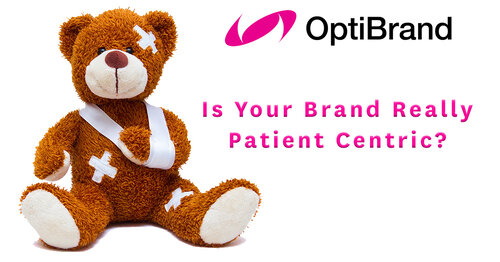
Is your brand really patient-centric? Have you measured it? Can you measure it?
We hear it all the time and are sure you have as well: “We want to be patient-centric,” “Patients are at the heart of everything we do.” “How do we put the patient first?” More than ever pharma brands are taking a patient-first approach to marketing and strategy.
Be it altruism, unmet market needs or simply the directive from senior management, we see the sentiment in virtually every brand we touch. It may be infused (or at least intended to be) into a company’s DNA, sprinkled into the brand’s positioning and messages, used as a focal point of the brand plan and vision statement, or all of the above. For most organizations, the hope is that it becomes the charge, the rally cry, the greater purpose behind what we as pharma marketers do.
Yet, far too often, all of the talk around wanting to be patient-centric inconsistently translates into clear actions. Some brands simply can’t walk the talk. However, we would argue the majority are actually struggling with tracking their performance, identifying where they excel, and more importantly, coming to terms with how they could be doing better.
In our minds, the challenge of building patient-centric brands is two-fold. First, patient-centricity is often vaguely defined—which makes the goal difficult to achieve. It is paramount for brand leaders to definitively define what being patient-centric specifically means in context of their category, stakeholders and product.
Second. Even with the best intentions, we as an industry rarely define metrics to measure and track our progress toward the goal of patient-centricity. Beyond using sales figures and a few qualitative verbatims as a surrogate, there are virtually no indicators to monitor how patient-centric a brand is, or if it is building the intended perceptions across stakeholders.
So, how can you do better? How can you do it without adding time or cost?
The best place to start thinking about monitoring your brand’s performance when it comes to patient-centricity is within your ATU (attitude, trial, and usage) tracking studies. Traditionally, these studies are used as an industry standard ‘report card’ to understand uptake, message resonance, attribute/benefit perceptions and future usage. However, they have the potential to be so much more.
A close look at pharma Key Performance Indicators (KPIs) reveals we as an industry are most concerned with measuring how our customers are performing for the brand or how we stack up against the competition. However, we often overlook the importance of understanding how we (and our competition) perform for our customers (e.g. How are we evolving the journey? How are we enhancing the patient-HCP dialogue? How are we fundamentally improving quality of life with the condition?).
In addition to the tried and true KPIs used in virtually every ATU study, we encourage teams to build-in trackers for corresponding Customer Performance Indicators (CPIs) and Patient Performance Indicators (PPIs).
This approach is gaining traction outside of pharma, the analog is a focus on customers as evidenced by the Harvard Business Review article ‘The Most Important Data You’re Not Tracking (Yet)’ by Gene Cornfield. (Apr. 2020).
The key question for developing PPIs: how are we doing for the patient?
The difference between a PPI and a KPI: a metric that a patient says is important to them. This means effort must be made to qualify what’s important then quantify how we are doing against the patient’s score card, not just the brand’s score card.
What’s most exciting, PPIs often unearth levers for brands that would otherwise remain hidden. Tracking PPIs will likely lead to new opportunities and drivers.
The easiest entry point to begin adopting a true patient-centric approach is to ask patients what’s important and track against it. The nice thing about PPIs is they are almost always in alignment with what’s best for the brand in the long term. Not only do they hold the potential to fuel growth, but they are the keystone to ensure our brands do more than just deliver treatment, but actually enhance life for those who have entrusted their health to us.

